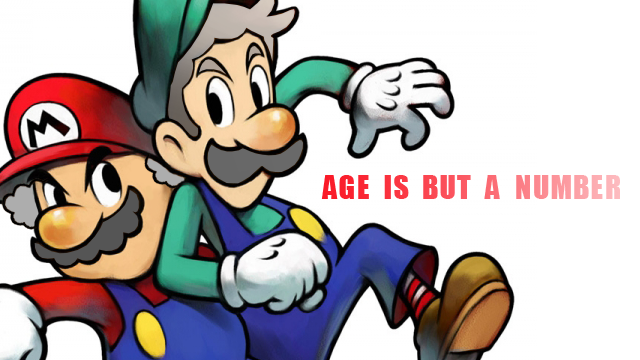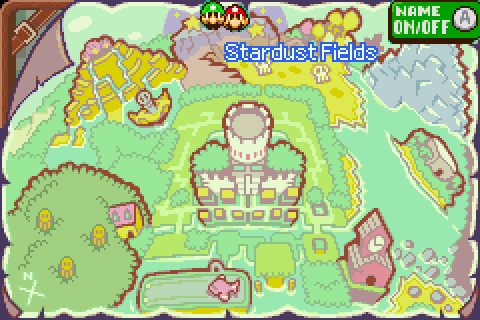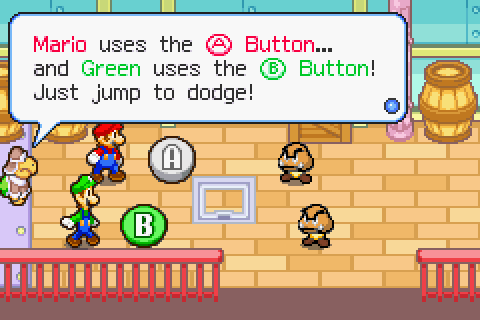
To call a work of art “timeless” is to bestow upon it some of the highest praise possible. After all, no writer, painter, singer, or other artist sets out to make something that will be enjoyed by people years from now or even in future generations. The focus is on the here and now. The present audience is most important, and ultimately what will determine an artist’s worth. I mean, it’s difficult enough to find success in the time being, let alone to worry about how our work will be viewed in the years to come.
If you are inclined to call video game creators artists (as I certainly am), then we should recognize the fact that game developers face the relatively unique challenge of working within an industry that is constantly growing and progressing on a technological level. It’s entirely conceivable for a studio to spend many years and countless sums of money on a game, only to find that the pace of the industry has outstripped its creation a matter of years or even months after release. It’s a sobering thought.
Think about it. How many times have we witnessed a video game release to boat-loads of hype and praise, only to be forgotten when the next best thing enters the arena?
During my freshman year of college, my roommates and I played so much Halo 3 together that I couldn’t even begin to estimate how many hours we pumped into that game. I mean, seriously, we’re talking every day after class, we’d throw our headsets on and jump onto Xbox Live. And even though I’ve never been a big Halo fan, I have to admit that it was a lot of fun. We had our own Halo drinking game and everything. It was good times, for sure.
Then Call of Duty 4 came out. Keep in mind that this was before the COD franchise became somewhat of a punchline with its yearly releases and Kevin Spacey voice overs, so the first Modern Warfare was utterly fresh and oh-so-much fun. Bye-bye Halo 3. Pretty sure the disc never went back into the console from that point forward.
The point here is, there’s a big gap between poor games and great ones, but there’s an even bigger gap between great games and timeless ones. Games that never lose their luster, never become any less fun regardless of what comes after it. A few months ago, Nintendo re-released a certain Game Boy Advance title on Wii U’s eShop, and after playing through it again for the first time since its original launch in 2003, I’m utterly convinced that Mario & Luigi: Superstar Saga is more than just a great game. It’s a timeless one.
So, what do I mean by “timeless”? It’s pretty simple. A game from an earlier generation that continues to hold up against the modern standard, is one I’d call timeless. There’s just something about a truly timeless game that never gets stale or moldy, regardless of changing standards and technological innovations.
Anyway, I had to think about what made Superstar Saga such a game, besides, of course, the ever present nostalgia factor. First and foremost it has to be the combat system, one of the truly clever and unique combat systems of its kind in the turn-based genre. In my opinion it is the game’s crowning achievement, a gameplay construct that should be studied by all students of game development. How would I describe it to someone who has yet to play the game? In a sentence: literally every single different type of enemy has to be attacked and defended against in a different way. That, alone, is just such a massive achievement in design.

The world map is far bigger than it looks here.
Mario and Luigi are assigned their own buttons– A and B respectively– and battles are a matter of picking up and tracking an enemy’s patterns and then timing your attacks and dodges correctly. It’s a system that makes for an incredible amount of depth, and one that absolutely never gets old. When it comes to RPGs, we’re used to a much more rigid structure in which we battle through a dungeon of generic enemies, and then we have to face a boss and figure out its attack patterns and weak points. In a sense, every enemy in Superstar Saga is a mini boss. Every enemy can be defeated only by recognizing its patterns and weaknesses, and attacking it thusly. So many RPGs have been released since Superstar Saga came out for GBA in 2003, and the vast majority of them come nowhere close to approaching the level of variety and depth offered here.
My second qualifier for the game’s timeless status– and the order is important, as I’d say it’s somewhat less significant than the gameplay– is that Superstar Saga is very funny. That’s a word that used to get thrown around all the time, and I’m not saying it’ll have you laughing like Ray Liotta in Goodfellas while you’re chilling on your couch, but it’s definitely clever and sharp, and just genuinely witty. Poor Luigi gets picked on to no end, for example, and I love the direction the creators chose in terms of giving Mario and Luigi voices.
The humor in Superstar Saga is just so charming and lighthearted that you can’t help but feel warmly invited every time you boot up your save file. Oftentimes we see writers rely on a hodgepodge of childish words or cheap pop-culture references to get a laugh, so it’s actually uplifting to play a game that keeps you looking forward to the next clever scenario or bit of dialogue that the game throws at you. Even the premise is fresh: Princess Peach hasn’t been kidnapped this time; rather, her voice has been stolen and replaced with bombs. Naturally. It sounds odd, but it makes sense (humorously, of course) when you see it on screen.
It’s a very long game, too, and at no point does it begin to feel like the writers ran out of ideas and settled for cheap jokes. Fawful, one of the main baddies, is a classic villain and a constant source of amusement. He belongs in Nintendo’s rich and exclusive pantheon of great characters. There are also several running jokes throughout the game. Mario is renowned throughout the Beanbean kingdom, for example, and a simple tap of the A button is all it takes to show off his famous jumping ability and send the characters you meet into a star-struck frenzy. Luigi, of course, is the game’s whipping boy of sorts, as he’s far less famous than his brother.

Luigi just can’t catch a break.
So, what we have here is a game that actually utilizes the unique strengths of gaming as a medium, so the humor is the result of more than just a well-written script. As you interact with the game’s NPCs and solve its myriad puzzles, your own actions, as the player, become a source of humor. Here’s a quick example to show you what I mean. One of my favorite moments in the game happens early on, as Mario and Luigi need to have their passport photos taken in order to cross the border into the Beanbean Kingdom. The Koopa responsible for taking the photos asks that you refrain from pressing any buttons while the picture is being taken. Of course you’ll end up doing it anyway, causing the Bros. to make one of several goofy faces that will show up on the pause screen for the rest of the game, though you’ll have several chances to retake the photos later on.
Moments like that are what make a game timeless. Anyone can write a script full of funny quips and witty one-liners, but when the humor is an inherent part of the gameplay, it will never grow stale.
For that reason, Mario & Luigi: Superstar Saga is the sort of game that people will be able to enjoy in any era, even as we progress into a future that’s all about high-tech effects and realistically rendered graphics. The gaming industry is overflowing with good ideas, but it’s a special thing when developers can build a game that utilizes the inherent strengths of video gaming as a medium. Mario & Luigi: Superstar Saga would not succeed as a movie, or a book, or a TV series. It’s a piece of interactive art, and one that anyone who loves video games owes it to his or herself to play.




 ShareThis
ShareThis







Loved this game! I played this a lot when I was in “a” school. The only thing I didn’t like was that once it was over, it was pretty much over. Would have liked a “new game plus” mode. Sadly I only played a little bit of the sequel for ds and haven’t played the other two at all. Think that might have to change soon.